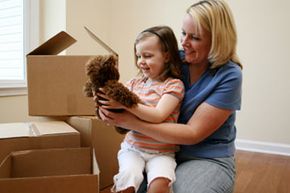The decision is now final. You've accepted the promotion and narrowed down the list of potential new homes, and you'll be moving soon. Now comes the hardest part -- planning the move and telling the kids. Whether moving out of state or just around the block, children and adolescents typically aren't thrilled by such an event. In fact, they rarely relish change of this magnitude. Fortunately, there are some steps you can take to ease the transition. Your attitude about moving and your willingness to let your children share in the experience will influence their feelings. Try following these 10 tips to make the move as anxiety-free as possible.
Advertisement
